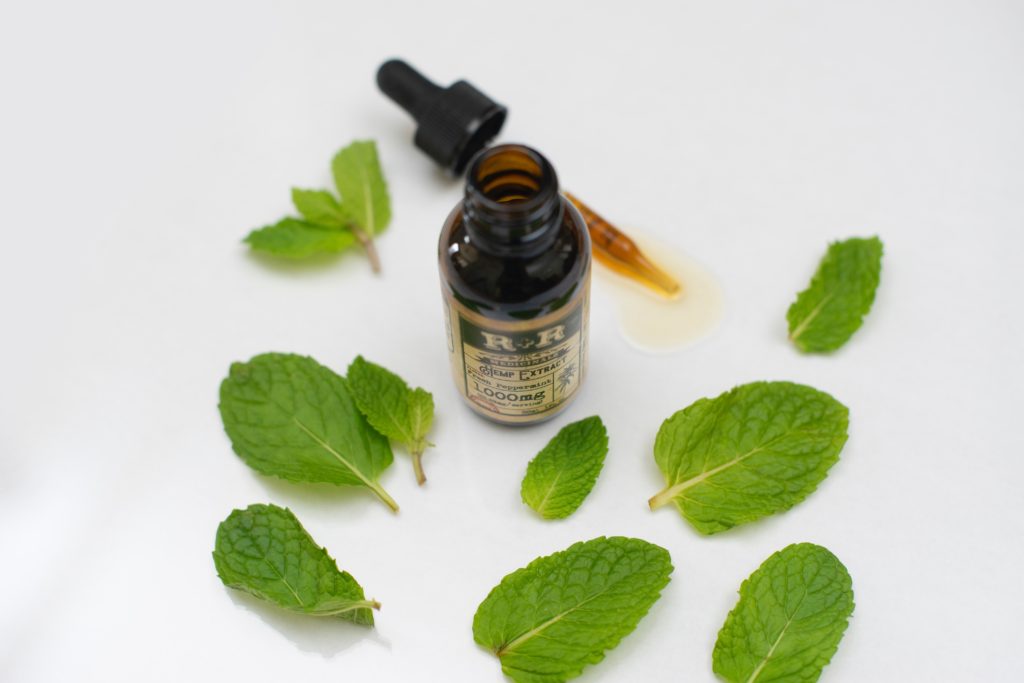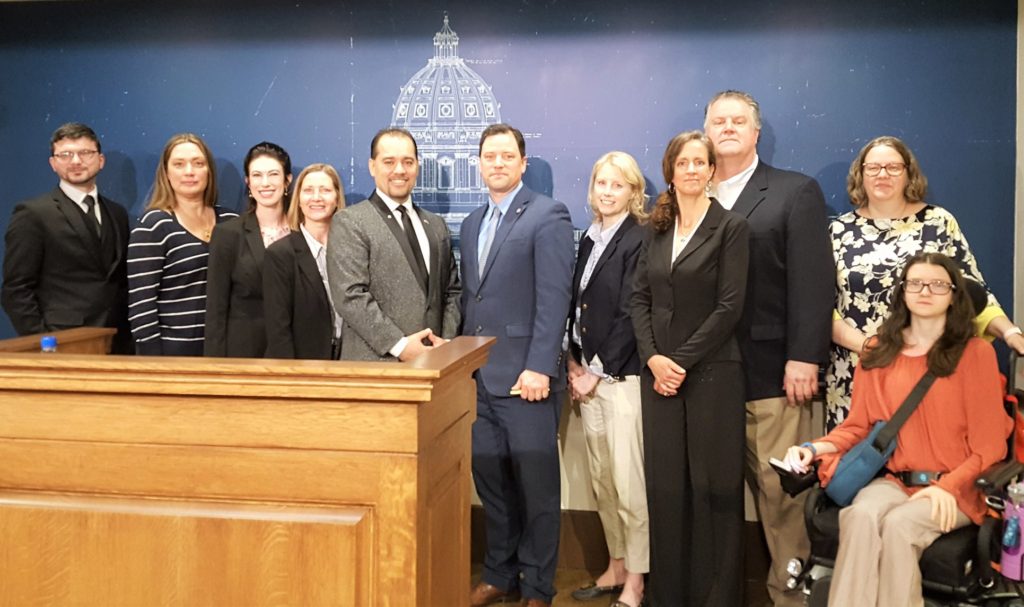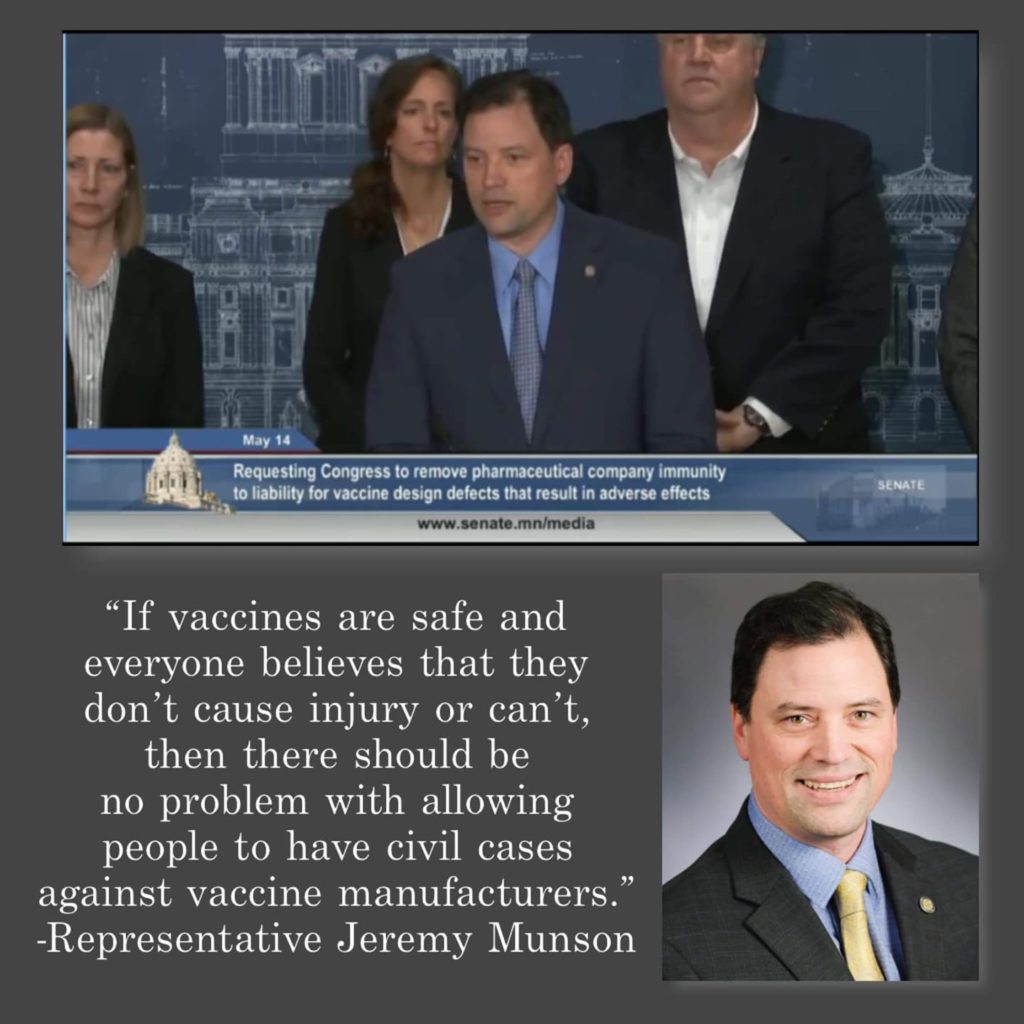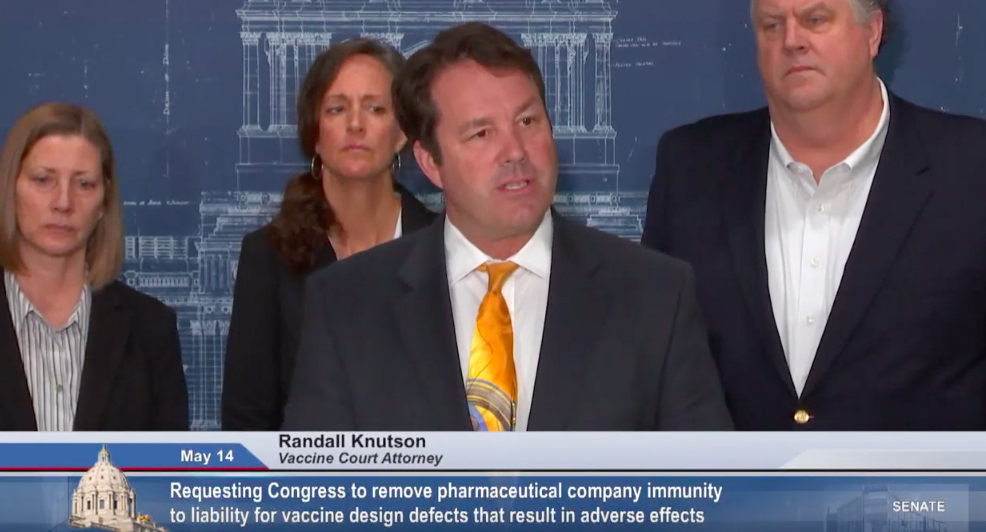This is an article I wrote for ChristianityToday.com, which first appeared on May 31, 2019.
Mandy Van Schyndel remembers May 16, 2018, as the day her daughter Emma laughed for the first time. A remarkable milestone for an 18-month-old who started her life on hospice at the Mayo Clinic, not expected to survive.
Even more remarkable that Emma’s parents credit a compound from a plant banned for more than 80 years with calming the disquieting symptoms of Emma’s conditions.
Faced with severe brain damage after suffering a bilateral stroke in utero, Emma’s diagnoses mounted: microcephaly, porencephaly, spastic quadriplegia cerebral palsy. When her uncontrollable seizures started three months later, a fourth diagnosis was added: Lennox-Gastaut Syndrome (LGS).
“It’s a beast,” Mandy explained. “It’s one of the worst forms of epilepsy.”
As Emma’s seizures intensified, she experienced up to 12 cluster seizures daily. “It was really sad,” Mandy said. “She was losing some of the skills she had. She wasn’t smiling anymore and she wasn’t cooing as much.”
The disruptive nature of LGS took its toll on the family of seven in Kaukauna, Wisconsin. “It was hard to go to church,” admitted Mandy, “because if she fell asleep I knew she would wake up and have a seizure. And it wasn’t like a few seconds. It would cluster for an hour.”
After trying “many different concoctions of medications,” including steroid injections and 10 months on a ketogenic diet—none of which provided relief—the family faced reality.
“We went from trying to find seizure freedom to just trying to find any kind of reduction—to increase her quality of life.”
That’s when Mandy brought up the topic of hemp-based CBD oil with Emma’s neurologist. “I said [to him], ‘I know this is a taboo subject,’” said Mandy. “He said, ‘It’s not taboo. There’s really something to it.’ That was a nice reassurance to hear.”
What Is CBD?
Short for cannabidiol, CBD is one of the primary compounds or cannabinoids found in both hemp and marijuana. Though cousins in the cannabis family with a similar appearance, they have different chemical profiles. Unlike marijuana, hemp is non-psychoactive, meaning it can’t get you high and is legally defined as containing 0.3% or less tetrahydrocannabinol (THC), the controversial psychoactive component in marijuana.
Though hemp cultivation has been legal at the federal level since January 1, 2019 (it was lumped in with marijuana and declared illegal in 1937), some states continue to grapple with the legal learning curve. And while lawmakers wrestle over regulation, or the lack of it, motivated consumers and clinicians are doing their best to do their own research in the caveat emptor CBD market, which is estimated to reach $2 billion by 2020 and $16 billion by 2025.
From chewing gum and chocolate to mascara and lotion, CBD can now be found in a multitude of everyday consumables. Has your favorite coffee shop added CBD-infused cold brew coffee to the menu? Is there CBD honey at your local farmer’s market? Maybe you’ve even seen ads for pet treats with CBD?
While new storefronts and online retailers set up shop for eager customers, established wellness brands seem to be coming on board as well. Young Living Essential Oils announced to distributors they plan to release a hemp CBD-infused essential oil sometime in 2019.
“Hemp-based CBD oil is not the same as marijuana. You get the anti-inflammatory [effects], the pain relief without the high,” said Troy Spurrill, a chiropractor with a focus on functional neurology and founder of Synapse, a clinic based in Eagan, Minnesota. “For some people, it really is and has been a lifesaver.”
Seizure Free with CBD
After several months of searching for a quality product she felt comfortable with, Mandy found a high-quality, full-spectrum CBD oil.
“I honestly didn’t have super high hopes,” she admitted, “but I felt the pull to try it.” A friend encouraged her to try it with Emma. “She kept saying, ‘Just try it. It’s not going to hurt her.’”
Within three days of giving their toddler two drops of CBD oil under her tongue twice a day, Mandy said they saw a “dramatic decrease” in Emma’s seizures. “It felt like the fog was lifted,” she said. “My child was awake under there. Now she’s laughing and smiling every single day!”
Emma went from having up to 12 seizures per day to going six months without one. “It’s miraculous,” Mandy said. “It baffles me that that minute amount can combat one of the most severe forms of epilepsy.”
Mandy said Emma’s therapists also remark on the significant changes in her daughter from a year ago. “She has more purposeful movement. She’s interacting with her peers. She’s playing with toys spontaneously. None of those things were happening before CBD oil,” said Mandy. “You can’t tell me that’s all a coincidence.”
It’s not a coincidence based on research either. Emma’s response seems consistent with the results of clinical trials, which showed CBD oil contributed to a significant reduction in the severity and frequency of severe epileptic seizures.
Those findings led to FDA approval last summer of Epidiolex, a pharmaceutical-grade CBD oil with trace amounts of THC, for seizures associated with two severe forms of epilepsy—Dravet syndrome and LGS—which Emma has. It’s the first time since the formation of the FDA that a drug from the cannabis plant has received approval.
The Forerunner
The controversy surrounding the plant restricted research about it for many decades, but that didn’t stop Nobel Prize nominee Raphael Mechoulam from engaging in the process of inquiry and discovery, starting in the 1960s.
A Holocaust survivor and professor of medicinal chemistry at the Hebrew University of Jerusalem, Mechoulam identified the first two cannabinoids (THC and CBD) and discovered the endocannabinoid system (ECS)—cannabinoids that the bodies of humans and vertebrates make on their own.
Considered one of the founding fathers of cannabinoid research whose work is covered in the documentary, “The Scientist,” Mechoulam has published hundreds of articles on medical cannabis, endocannabinoids, and CBD, advocating for CBD’s anti-inflammatory, anti-anxiety, and neuroprotective benefits. In 1980 Mechoulam and his colleagues found CBD decreased seizures in epileptic patients.
During the last few decades, more than 100 cannabinoids have been identified in the cannabis plant, but THC and CBD are still the most abundant and attract the most attention.
CBD works with the body’s endocannabinoid system, which Spurrill explained “is a form of communication,” since it has cannabinoid receptors throughout the entire body, many of which are in the nervous and immune systems. Research suggests that may be one reason many CBD oil users often report experiencing benefits for many types of conditions. (CB1 receptors are found mainly in the central nervous system and brain, while CB2 receptors are found in the rest of the body, including the immune and muscular systems.) Those who experience “runners’ high,” for example, are feeling the effects of the endocannabinoid system at work.
Tiptoeing into CBD Clinical Use
Though aware of CBD over a decade ago, Spurrill was reluctant to bring it into his functional medicine clinic.
“I was not for it in the beginning,” he admitted. “I had the same concerns as a lot of Christians. I did not want to be a part of anything that promoted [marijuana use]. But then I saw the science and research, so I switched gears.”
In the last four years, Spurrill, who sees patients from 48 states and 12 countries, has documented results with more than 100 patients taking hemp CBD oil, seeing the biggest effects in people with insomnia, pain, anxiety, and seizures. “We’ve not had one problem with it.”
But he cautions anyone looking into hemp CBD oil to make sure there’s no THC in it since there are formulas that mix CBD from hemp and marijuana. “You have to know what you’re working with, because there are people who just want the high and they’re rationalizing the science that’s come out on CBD. They’re trying to escape life. For Christians, we don’t need to.”
Some evidence even suggests hemp CBD oil can decrease addictive marijuana use and help pain patients addicted to opioids regain sobriety.
In one case, hemp CBD oil was “a game changer,” said Spurrill, who helped a suicidal patient whose multiple surgeries left him in chronic pain and addicted to prescription painkillers. “He got off the opiates and is alive and doing well today. It managed the pain. It ended up being a big tool for me to help him.”
Christians Using CBD Oil
Despite the gaps in research and regulation, many people are turning to CBD in its various formulations—oils taken internally as well as capsules, topical creams, and edibles.
Kim Nelles, a Dallas-area mom, teacher, and former Young Life staff member, turned to CBD oil originally to help her husband, Brian, a veteran struggling with PTSD, after other biomedical and therapeutic options were ruled out.
“I wanted help. I didn’t want a vice,” said Kim. “I didn’t want to be any sort of stumbling block for anyone. The more I was researching, [I saw] these are two totally different things.”
But she was determined to find a pure form of hemp CBD oil. “I’m not a granola girl at all, but on this one thing I’m fastidious about making sure it’s organic and grown in the US. You have to know what you’re buying. Some folks have bought inferior products and haven’t had any sort of effect.” Together, the couple began taking a formula applied under the tongue and noticed it helped bring a sense of calmness.
Bethany Kremer, a caregiver in New Haven, Connecticut, and a friend of the Van Schyndels, started taking CBD oil in April 2018 and soon noticed three benefits. “For the first time since I was a teenager, I don’t have any cramps with my period. I lived on ibuprofen and Tylenol. CBD oil took away those cramps. Those have not returned.”
She also noticed improved sleep, as she wasn’t waking up as often in the night, and said it helped with her appetite and food cravings.
After a year of using CBD oil for stiffness and tension, Sheila, who preferred not to be identified with her last name, has since discontinued it. “I simply find I don’t need it,” she said, “I found that I had an increase in my sense of wellness, a sense of shalom, and the stiffness I used to feel went away.”
“I’m not against using it again,” she added. “As we grow and dialogue with [God], we’ll know what to do with continued use. … It’s a matter of listening to our internal wisdom and Father’s voice.”
Discernment Is Key
It all comes down to discernment, Spurrill said, citing one of his personal guidelines: “If God made it, it’s good. If man altered, just beware. That’s true for everything, including CBD oils.”
Though Scripture doesn’t mention CBD specifically, the Bible does give us guidance with wine: drink but don’t get drunk (Eph. 5:18). Paul also told Timothy to use wine medicinally (1 Tim. 5:23). And in his first public miracle, Jesus turned water into wine, not Welch’s.
And then there’s caffeine. While a few faith groups shun this addictive stimulant (once labeled the “devil’s drink”), it would be hard to find a church that doesn’t own a coffee pot.
Both Ezekiel 47:12 and Revelation 22:2 speak of leaves being used for healing—verses that many Christians lean on for spiritual assurance when using plant-based therapeutics, such as herbs and essential oils. On the latter, Samaritan Ministries wrote a seriesencouraging spiritual discernment as well.
Genesis recounts on the third day of creation God created seed-bearing plants, which would include cannabis plants. Regardless of how humans have used, confused, abused, or misused God’s good creation, the biblical principle still remains: God’s fingerprints were there first.
As Andy Crouch wrote for CT, “Christians despise no created thing. The [cannabis] plant is a part of a world that was declared good by its Maker every step along the way.”
However, doctors are not equally informed about CBD, and many are on a learning curve. Patients who expect their healthcare professionals to be well versed on both the benefits and risks of CBD oil may be disappointed.
Christianity Today reached out to physicians, some of whom were Christians, and found several were either not aware of the differences between hemp and marijuana or hadn’t studied it yet. Some thought CBD oil was the same as medical marijuana (which it is not) and a few either dismissed it as a fad or hadn’t heard of it. The Christian Medical and Dental Association recently published a piece on medical marijuana, though in a parenthetical note the author notes it’s the CBD component in the marijuana that provides some benefit.
Walt Larimore, a physician and author of several books including God’s Design for the Highly Healthy Person, publicly answered a few questions recently about CBD oil on his blog. Yet while he acknowledged that some research suggests CBD oil can help with certain conditions, the post also mistakenly referred to hemp as marijuana.
Nonetheless, Larimore pointed to a 2017 Penn Medicine study that revealed one of the consequences inadequate regulation and oversight in a booming CBD market can have. The study found that 70 percent of CBD products sold online are either over- or under-labeled, due to the lack of standards.
The reality of mislabeling is why the purity of the sourcing and processing of hemp is important, said Spurrill, since the therapeutic benefits of CBD “can be negated if it’s not done properly. If it’s not a clean source, then there’s all kinds of problems,” such as pesticides, fungus, and molds.
Spurrill added that some types of people should be careful using CBD, including individuals with low dopamine, excessive sleepiness, low blood sugar, impulsivity, and anger.
“It doesn’t mean it won’t work. It means it could drive things down a certain path. Just because you read something is good, it means it may be good for a percentage of people in the right time and the right environment,” he cautioned. “All of that has to be considered.”
In his “Ask Dr. Walt” column, Larimore offers advice to anyone looking to try CBD oil: “Start with a very low dose and then very slowly increase how much you take.”
Removing the Stigma
Having a place where Christians can “thoughtfully explore and scripturally examine” CBD is important, said Natalie Gillespie, editor in chief for GodsGreenery.com, the first online CBD educational resource for Christians looking for information and research.
“When I first heard of CBD, I dismissed it immediately,” Gillespie wrote. “No way, Jose, was I going to use something that was lumped into the same plant family as pot. … Then I began to hear … so many stories, of the benefits my own friends found when using it. … That led to my inner questions. And the examination of my beliefs. I realized I have developed a trust, a faith, in Western medicine. … We are discovering every day that what God designs is better than what man makes.”
In an interview, Gillespie said the goal for the site, which launched in November 2018, is “to create a conversation and to take the stigma away from even being able to talk about it. The last thing you want is to feel like you have to hide.” She wants it to be “a place for thoughtful discovery through a biblical lens and community,” which includes talking with pastors about CBD.
Of those pastors interviewed, many were unfamiliar with it. But one pastor who tried CBD oil, Neal Locke of First Presbyterian Church in El Paso, Texas, said, “There are a great many things in God’s creation that are useful and intended for our benefit. … I think CBD oil falls into that category—potentially useful and for our benefit, but subject to wise and intelligent usage.”
As for the Van Schyndels, the relief CBD oil brought Emma gave the whole family freedom to enjoy life together again—from baseball games to going on vacation to enjoying boat rides.
“She giggles when we go fast,” said Mandy. “She loves the wind blowing in her hair. We were never able to bring Emma along because of her seizures and now we’re able to do that.”
“Emma is a true warrior,” said Mandy of her now two-year-old. “She’s one of God’s miracles. Her middle name is Grace because she’s truly here by God’s grace.”
***
Photo by Stefan Rodriguez on Unsplash




